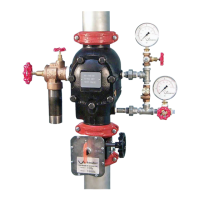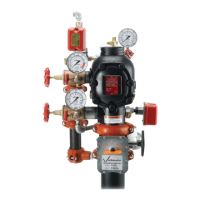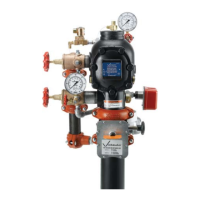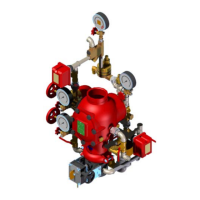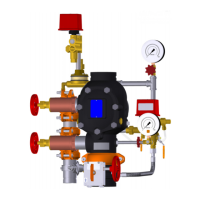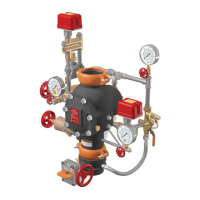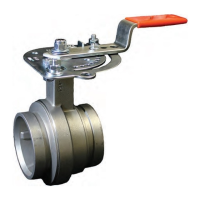13
4. Close the main water supply control valve.
5. Open the inspector’s test valve. Record the system air
pressure at which the low air alarm activates.
6. Close the inspector’s test valve.
7. Perform Steps 4 - 14 of the “Placing the System in
Service” section.
TRIP TEST
Partial flow tests are used to confirm the proper operation
of the valve. The partial flow test does not confirm the oper-
ation of the full system.
Full flow testing allows the full flow of water into the sprin-
kler system and must be done in warm weather when there
is no chance of freezing conditions.
The frequency of inspections may vary due to environmen-
tal conditions. For minimum maintenance and inspection
requirements, refer to the NFPA pamphlet describing the
care and maintenance of sprinkler systems. More frequent
full and partial flow tests may be required by the authority
having jurisdiction.
Partial Flow Test
1. Notify the authority having jurisdiction and those in the
affected area that the test will be in progress.
2. Record the water supply pressure and the system air
pressure.
3. Fully open the water supply main drain valve to flush
any foreign materials from the system.
4. Close the main water supply control valve.
5. Slowly open the main water supply control valve until a
small flow of water is detected from the water supply main
drain.
6. Close the water supply drain valve.
7. Open the system main drain. NOTE: In a pneumatic
system, this may trip the valves.
8. Open the inspector’s test connection to simulate an
open sprinkler head.
9. Record the system air pressure when the valve acti-
vates. When the valve activates, water will be expelled
from the ball drip and the dry actuator.
10. Close the mainwater supply control valve.
11. Follow Steps 4 - 10 of the “Placing the System in Ser-
vice” section.
